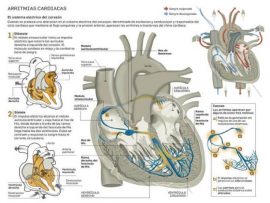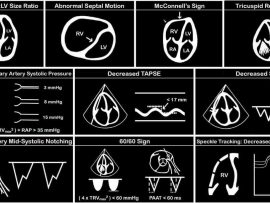Abstract Advanced epithelial ovarian cancer (EOC) has a well-characterized pattern of spread; the cancer cells tend to stay within the peritoneal cavity, attaching to organ surfaces and only invading superficial..
Read MoreCongenital absence of pulmonary valve syndrome (APV) represents a fascinating and unique variant of congenital heart disease. It was Chever in 1847 who first described this unique structural heart defect...
Read MoreAbstract Importance Tranexamic acid (TXA) is an efficient antifibrinolytic agent; however, concerns remain about the potential adverse effects, particularly vascular occlusive events, that may be associated with its use. Objective ..
Read MoreAbstract Background Extracorporeal membrane oxygenation (ECMO) is a potential treatment option in critically ill COVID-19 patients suffering from acute respiratory distress syndrome (ARDS) if mechanical ventilation (MV) is insufficient;..
Read MoreAbstract Objectives To evaluate the association of intraoperative urinary biomarker excretion during cardiac surgery and the subsequent development of acute kidney injury (AKI). Design Prospective, nonrandomized, observational study. Setting Single..
Read MoreAbstract Objectives The reduction of postoperative acute kidney injury in patients undergoing cardiopulmonary bypass surgery using an oxygen delivery-guided perfusion strategy (oxygen delivery strategy) for cardiopulmonary bypass management compared with..
Read MoreAbstract Objectives To examine the sensitivity and specificity of perioperative lactate gradients for the prediction of subsequent development in patients undergoing cardiovascular surgery. Design Retrospective, single-center, case-control study. Setting University hospital...
Read MoreAbstract Introduction Peritoneal carcinomatosis remains a condition with poor prognosis and limited therapeutic options. Pressurized Intrapertioneal Aerosol Chemotherapy (PIPAC) has been developed as a new tool for delivering intraperitoneal chemotherapy..
Read MoreAbstract Bleeding and thrombosis-related complications are common in pediatric cardiac patients supported by extracorporeal membrane oxygenation (ECMO) and are associated with morbidity and mortality. The purpose of this study was..
Read MoreAbstract Historically, the surgical literature was defined based on a predominance of case series, case reports, and anecdotal experiences of surgical investigators. But over the past several decades, the methodologic..
Read MoreAbstract Donor shortage is a major limitation in organ transplantation. Several studies have reported that extracorporeal membrane oxygenation (ECMO)-assisted organ donation can be successfully completed without inducing warm ischemia in..
Read MoreAbstract Millions of blood components including red blood cells, platelets, and granulocytes are transfused each year in the United States. The transfusion of these blood products may be associated with..
Read MoreAbstract Allogenic blood is a scarce, precious, and expensive resource that is not always available on demand. After termination of cardiopulmonary bypass, a large amount of residual pump blood remains..
Read MoreAbstract The effects of cardiopulmonary bypass on patients who have active or dormant malaria are unknown. What is known is that malaria-induced hemolysis can be exacerbated by cardiopulmonary bypass. We..
Read MoreMitral regurgitation (MR) is the second most common valve disease needing intervention in the Western world, after degenerative aortic stenosis.1 Echocardiography is the key examination in the assessment of MR patients.2 Echocardiography..
Read MoreIntroduction: Pulmonary embolism (PE) is a potentially fatal disease encountered in the hospital setting. Prompt diagnosis and management can improve outcomes and survival. Unfortunately, a PE may be difficult to diagnose..
Read MoreAbstract Veno-venous (VV) extracorporeal membrane oxygenation (ECMO) has become an integral part in the rescue therapy of severe acute respiratory distress syndrome (ARDS) and may be lifesaving in patients with..
Read MoreAbstract There is limited evidence as to the pharmacokinetic changes expected in adults with extracorporeal technologies. Drugs may be taken up by various components of the cardiopulmonary bypass circuit itself...
Read More























